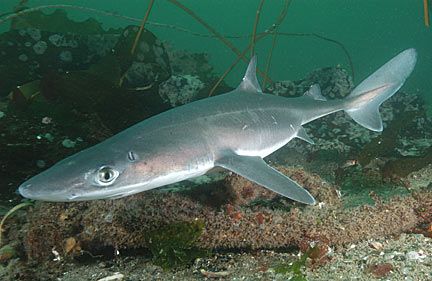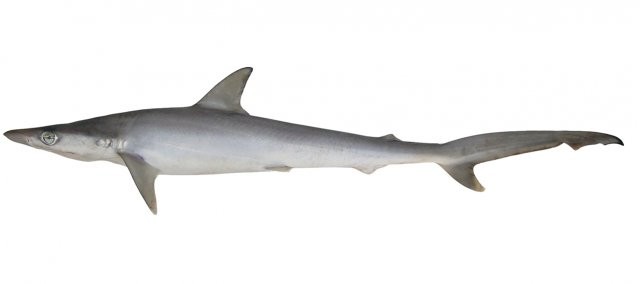Table of Contents
The skin of Scoliodon:
The leathery skin or integument of Scoliodon have both dermis and epidermis layers, the outer layer of integument in Scoliodon is the epidermis and the skin layer below the epidermis is known as dermis or corium layer. The tissues of the epidermis are ectodermal in origin while the tissues in the dermis layer are mesodermal in origin.
Epidermis of Scoliodon:
The epidermis layers are made of several layers of stratified epithelium cells, the cells in the epithelium have cilia in the young stage but the cilia are lost with time and in the adult stage the cilia become absent.
All the layers of the epidermis are present on a basement membrane, the lowermost layer of the epidermis which is attached directly to the basement membrane is made of polyhedral or columnar cells, the lowermost layer of the epidermis is known as stratum germinativum.

The outer layer of the epidermis is made of keratinized and flattened cells, some cells of the epidermis are modified into mucous secreting gland cells, the secretion of the mucous glands make their skin slimy.
The dermis of Scoliodon:
The dermis layer of the integument of Scoliodon can be divided into three layers – stratum laxum and stratum compactum and subcutaneous layer. In the dermis layer below the epidermis, some pigment cells are present and their concentration determines the skin colouration of Scoliodon, the pigment cells or chromatophores or melanophores are responsible for the dark colouration on the dorsal body surface of Scoliodon.
The stratum laxum layer of the dermis is made of loose connective tissue fibres and this layer is not compact as compared to the stratum compactum layer of the dermis. The middle layer is the stratum compactum which has dense connective tissue fibres and the lowermost layer is the subcutaneous layer.
In the dermis layer, connective tissue fibres form a messy network, in between the connective tissue fibres nerve fibres, pigment cells, blood vessels, areolar tissue and smooth muscle fibres present.

Functions of Skin in Scoliodon:
- Thick skin of Scoliodon give a protective sheath on their body which protects them against from different types of shock.
- Some cells of dermis layer are modified into mucous gland cells and the skin gland of their skin secret mucous which makes their body surface slimy which makes their body slippery. The slippery body help them to protect themselves against their predators, the slimy body minimise the friction in the water which gives them swiftness in swimming. The thick layer of mucous on the body of Scoliodon prevent entry of microorganisms into their body.
- The body colouration of Scoliodon is very helpful for them to protect themselves against their predators and help them to hide in the water against their prey. On dorsal side their body is dark coloured but ventrally body is pale white. When we see the ocean bottom from above the ocean it looks dark and when we see the ocean from the see floor it looks like whitish. The dark colour on dorsal side and whitish colouration on ventral side help them in camouflage in water because their body colour blend with water nicely, so they become unnoticed easily against their prey and predators.
- Scoliodon live in ocean water and they collect their food by capturing other animals and they have to protect themselves against different predators. So they have to receive all information in water and for this they need sensory structure which makes them aware about the surrounding in the ocean. The skin have some sensory receptors cells which takes part in reception of different types of sensory stimulation from the ocean and help them to keep alert.

So overall the skin of Scoliodon have a great role in protecting them again their predators, helping in camouflage, providing swiftness, the skin providing primary insulation.
Detailed Study On
External Morphology of Scoliodon
Scoliodon: Habits Habitat and Geographical Distribution
Hi Everyone!!! Welcome to Imaluop. Imaluop always try to learn some new and he want to share to other people. Here we will try to learn various topics on Science, specially on Biological Sciences.